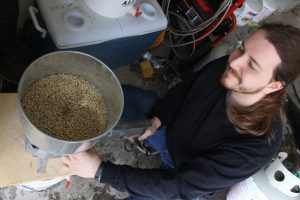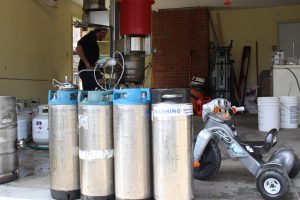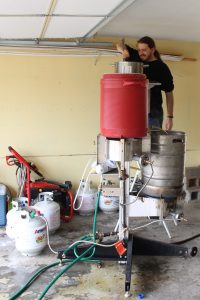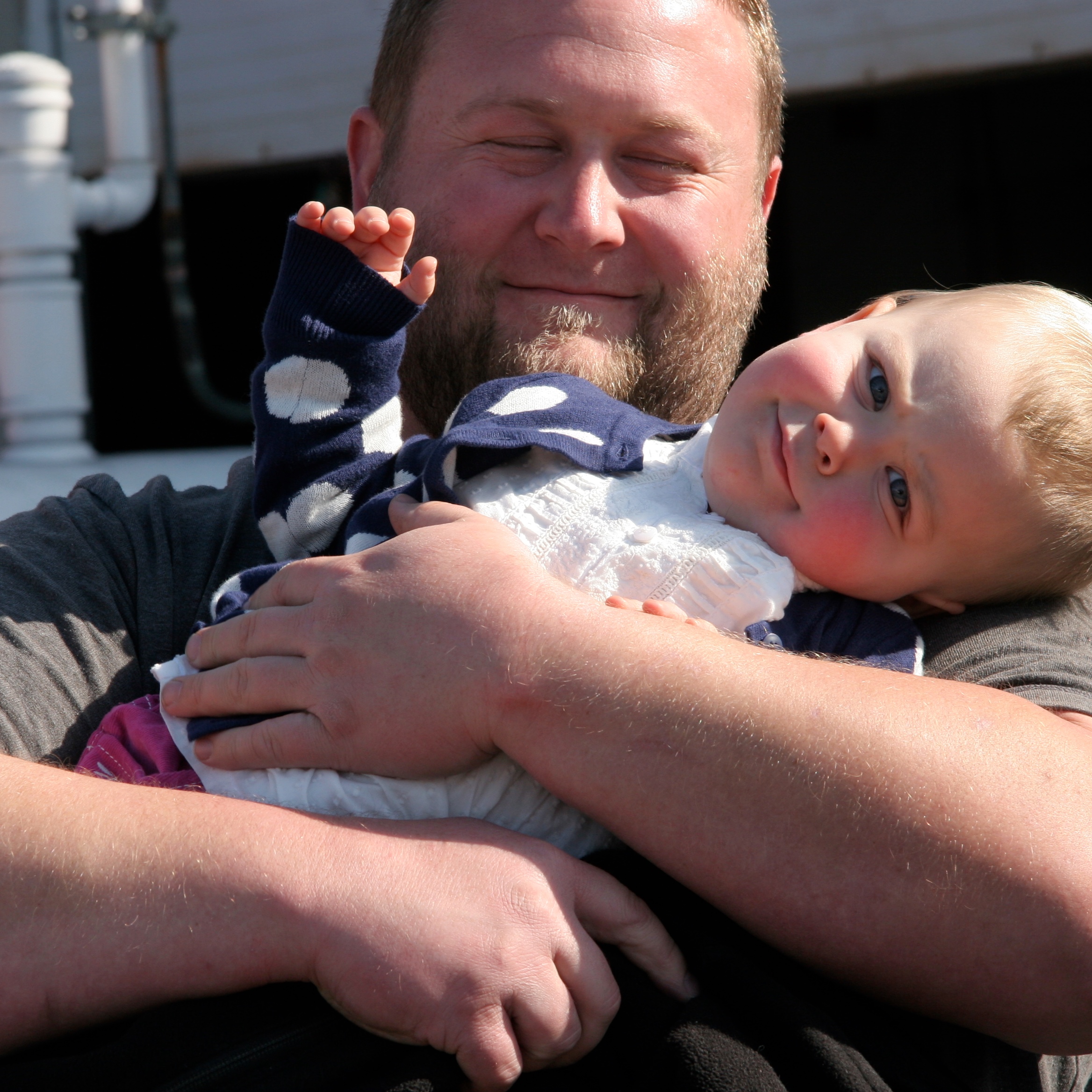The Brewer. You know those guys at your company that do things with computers to make the computers do things that seem like magic to most people. Well that is Zane. He works hard to make computers, systems and processes help business run smoother. At least that is what he tells his boss.
Or it may be that he is secretly working on a plan of world domination using computers, beer and his son’s big wheel. More about that some other time.
He also happens to be one of the best home brewers in the state. Numerous awards from the Kentucky State Fair Homebrew competition attest to that fact. I endorse his skills from my sample of a Rauchbier with just the right amount of smoke and crispness to delight.
The Brew. I wanted to brew with Zane because he brews a wide range of beers and he can hit a style dead on. Personally, I do not have the discipline needed to match styles. It may also have to do with the fact that I tend to drink too much while brewing.
On one of the few Saturday’s this early spring that the weather was half way decent, Zane opened his garage brewery to produce three beers that day. A Kolsh, Marzen and Dopplebock. There would be lots of Pils, Munich Malt, Tettnanger and Mittelruh moving through his brew system that day.
The Brewing. Besides brewing three different beers, Zane was experimenting with the traditional German Decoction process. This involves boiling small parts of the mash and continually replacing it into the mash. This increases the melanoidins to provide a complex malt flavor into what is a fairly simple grain mix.
You start with the grain mash at room temperature instead of the traditional 140-150 degrees. You take a third of the mix out and bring it to a boil. Add that back to the mash which brings the temperature up to about 90 degrees. Take a third of the mix and bring to a boil. Add back to the mash to bring the temp to 120 and repeat the process a final time to bring the entire mix to the 150 range. Once the entire mash comes to 150 degrees you let it steep for the traditional 60 minutes to release the sugars.
You need to be careful not to scorch the bottom of the kettle in which you bring the mash to a boil.
According to Zane this technique was developed by Germany brewers in order to bring additional flavors to their beers prior to the availability of modern malting techniques, which now give us so many grain choices today.
Working and talking with really good brewers like Zane help you understand how subtle modification of technique makes a big difference. Simple changes in time, temperature, and how you manage your brew creates distinct difference in all aspects of your beer.
You have to understand Zane’s brewing set up to fully appreciate the effort and danger he was going through. His tower set up is great for traditional brewing. Water is heated at the top. Heated water flows down to the mash ton. Resulting wort flows down into the boil pot. Boiled wort runs through a chiller into fermenting containers. Easy gravity based process.
But when you are bringing part of your mash to a boil and also doing overlapping batches of brew it complicates the logistics. So now take hot mash. Climb up a ladder. Bring it to a boil. Scoop it out of the top pot and bring it back to the mash ton. Repeat. Repeat again. So you end up moving up and down a ladder with extremely hot mash. Perching over a hot pot and scoop hot mash. All while trying to catch fire or pour hot liquid on some body part that you really like.
I believe early English used a similar balancing act with hot tar to repel Vikings.
The Brewer’s Thoughts. As we parted company, I asked Zane for some parting comments. I was not surprised by his answer. From high on his ladder perched over his boiling pot with a pair of gloves, stir spoon and small pot full of near boiling mash he said, “I like to brew to style because it is hard. It challenges me to be better.”
Zane works hard so we can enjoy better beer. Or is it that world domination thing?







